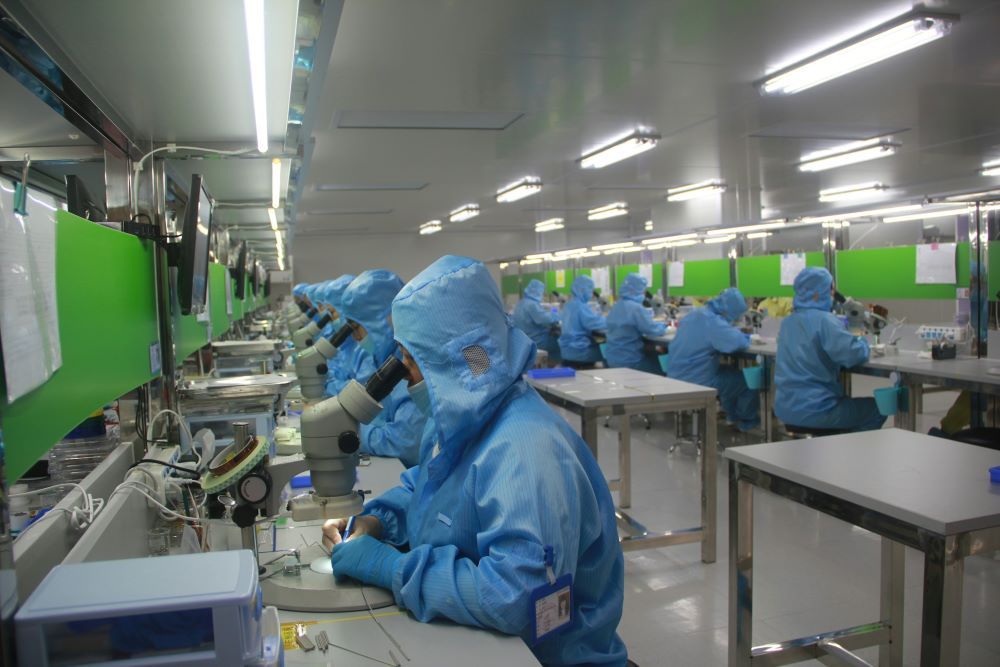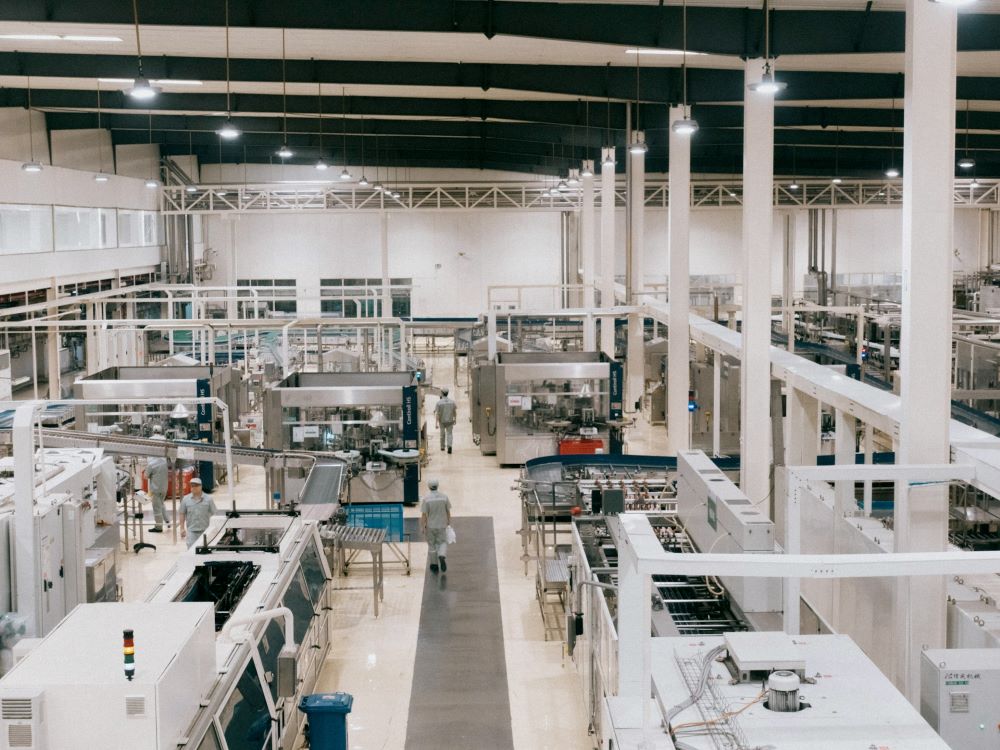Table of Contents
ToggleGain insights into how manufacturing in China has managed to sustain its dominance and what challenges lie ahead.
Manufacturing in China has long been a cornerstone of its rapid economic growth and global influence. From humble beginnings to becoming the world’s manufacturing powerhouse, China’s journey is a testament to strategic planning, policy innovation, and an immense labor force.
The Rise of China’s Manufacturing
Early Stages: Reform and Opening Up
The transformation of China’s manufacturing industry began in the late 1970s with the reform and opening-up policy initiated by Deng Xiaoping. This pivotal shift dismantled the rigid structures of central planning and introduced market-oriented reforms, which transformed how goods were produced and traded. Special Economic Zones (SEZs) like Shenzhen became experimental hubs, drawing in foreign direct investment and acting as testing grounds for more liberalized economic policies. These zones helped cultivate a favorable business environment that encouraged foreign companies to set up manufacturing operations in China, bringing with them capital, expertise, and new technologies.
The Chinese government’s strategic choice to focus on export-oriented growth paid off quickly. As manufacturing capacity increased, China began producing goods at scales and prices the rest of the world couldn’t match. The combination of a massive labor force and relaxed regulations enabled the country to quickly ramp up production across multiple sectors. This early era set the foundation for China’s eventual role as a global manufacturing giant, establishing deep connections with multinational supply chains and laying the groundwork for decades of industrial expansion.
The 1990s and Early 2000s: The World’s Factory
By the 1990s, the global narrative around manufacturing in China had fully crystallized: it was now the world’s factory. Factories sprung up across coastal provinces, churning out everything from textiles to electronics. Low labor costs played a pivotal role, allowing China to dominate labor-intensive industries and undercut competitors in other developing countries. Wages remained far below those in Western nations, making it financially attractive for global companies to outsource production to China.
But it wasn’t just cheap labor that drove China’s dominance. Massive investments in infrastructure enabled efficient movement of goods from inland factories to global markets. Highways, high-speed rail networks, and world-class ports ensured that supply chains ran smoothly. Policy support further accelerated growth, with tax incentives, relaxed regulations, and direct government subsidies creating an ideal environment for industrial expansion. China’s 2001 accession to the World Trade Organization (WTO) marked a turning point, cementing its role as a key player in the global economy and dramatically increasing its exports almost overnight.
The Present: Challenges and Transitions
Moving Up the Value Chain
As wages have risen and competition has intensified, manufacturing in China is undergoing a major transition. The focus is shifting from low-cost, labor-intensive production to high-value, technology-driven industries. Central to this evolution is the “Made in China 2025” initiative, a state-led industrial policy aimed at upgrading China’s manufacturing base. This strategy promotes sectors like robotics, aerospace, and electric vehicles, all of which require greater technical expertise and innovation capabilities.
The shift up the value chain is not just a matter of ambition—it’s an economic necessity. Rising labor costs have eroded the cost advantage that once defined China’s appeal. To stay competitive, the country must pivot toward more sophisticated production that delivers higher margins and global prestige. Reducing reliance on foreign technology is also a core motivation, especially amid rising geopolitical tensions that have highlighted the vulnerabilities of interdependence in areas like semiconductors and industrial software.

Innovation and Digitalization
Technology is reshaping the future of manufacturing in China. Factories are integrating smart technologies like artificial intelligence, big data, and the Industrial Internet of Things (IIoT) to streamline operations and reduce waste. This digital transformation is accelerating productivity and allowing manufacturers to respond more quickly to market demands. It is also enabling greater customization and higher product quality, helping China shed its image as a producer of cheap goods and reposition itself as a source of innovation.
The Chinese government has thrown significant support behind this digital shift, with targeted investments in research and development and incentives for tech-driven firms. Private sector giants are also playing a role, with major Chinese tech companies investing heavily in automation and industrial AI. In some sectors, such as consumer electronics and electric vehicles, China is already beginning to lead in innovation rather than just production. This technological momentum is helping China carve out a new role in global manufacturing, one defined not just by volume, but by value.
Environmental Concerns
However, China’s industrial rise has not come without cost. Decades of rapid growth have led to severe environmental degradation, including high carbon emissions, polluted waterways, and smog-filled cities. Public outcry and growing awareness of climate issues have pushed the government to enforce stricter environmental regulations. The manufacturing sector, being one of the largest polluters, has come under intense scrutiny.
In response, China is investing in greener production technologies and encouraging industries to adopt more sustainable practices. The transition to electric vehicles, the expansion of renewable energy, and efforts to reduce industrial waste are all part of this broader environmental agenda. Still, the path to green manufacturing is complex, particularly as the country balances economic growth with ecological responsibility. For manufacturing in China to remain globally competitive, sustainability must become a core principle of industrial strategy.
The Future: Opportunities and Challenges
Opportunities
Despite growing challenges, manufacturing in China remains a sector rich with opportunity. Continued investment in artificial intelligence, automation, and next-generation materials positions China at the forefront of global industrial transformation. In some advanced manufacturing segments, Chinese firms are now innovating at a pace that rivals or even surpasses their Western counterparts.
At the same time, China’s enormous domestic market offers significant growth potential. A rising middle class is fueling demand for high-quality consumer goods, homegrown technology, and locally manufactured luxury items. This growing internal consumption can help offset export volatility and make manufacturing in China more resilient to external shocks. Additionally, initiatives like the Belt and Road Initiative (BRI) are creating new international trade corridors and markets for Chinese-made goods, further expanding the global reach of its manufacturing sector.
Challenges
Still, the road ahead is far from smooth. One of the most pressing challenges is the intensification of geopolitical tensions, especially with the United States and other Western economies. Tariffs, export controls, and restrictions on technology transfers have created a more uncertain environment for international trade. China’s manufacturing sector must now find ways to diversify supply chains and reduce exposure to foreign sanctions or dependencies.
Demographic shifts also loom large. An aging population threatens to shrink the labor force, creating shortages in some key manufacturing roles. While automation offers a partial solution, it cannot entirely replace human labor in many specialized or creative manufacturing processes. Furthermore, other developing countries such as Vietnam, India, and Indonesia are positioning themselves as attractive alternatives for global manufacturers. These nations offer lower labor costs and increasingly sophisticated production capabilities, presenting direct competition to China’s traditional manufacturing base.
Conclusion
Manufacturing in China has undergone remarkable transformations over the past few decades. From being the world’s factory to aspiring to lead in high-tech manufacturing, China continues to adapt to changing economic and technological landscapes. While challenges such as geopolitical tensions and environmental concerns persist, the opportunities for growth and innovation remain vast. As China navigates these complexities, its manufacturing industry will undoubtedly play a crucial role in shaping the global economic future.
Are you looking to expand into China? Contact Eos Global Expansion today. Check our services here or book a free consultation now.
Featured photo by Catgirlmutant on Unsplash







